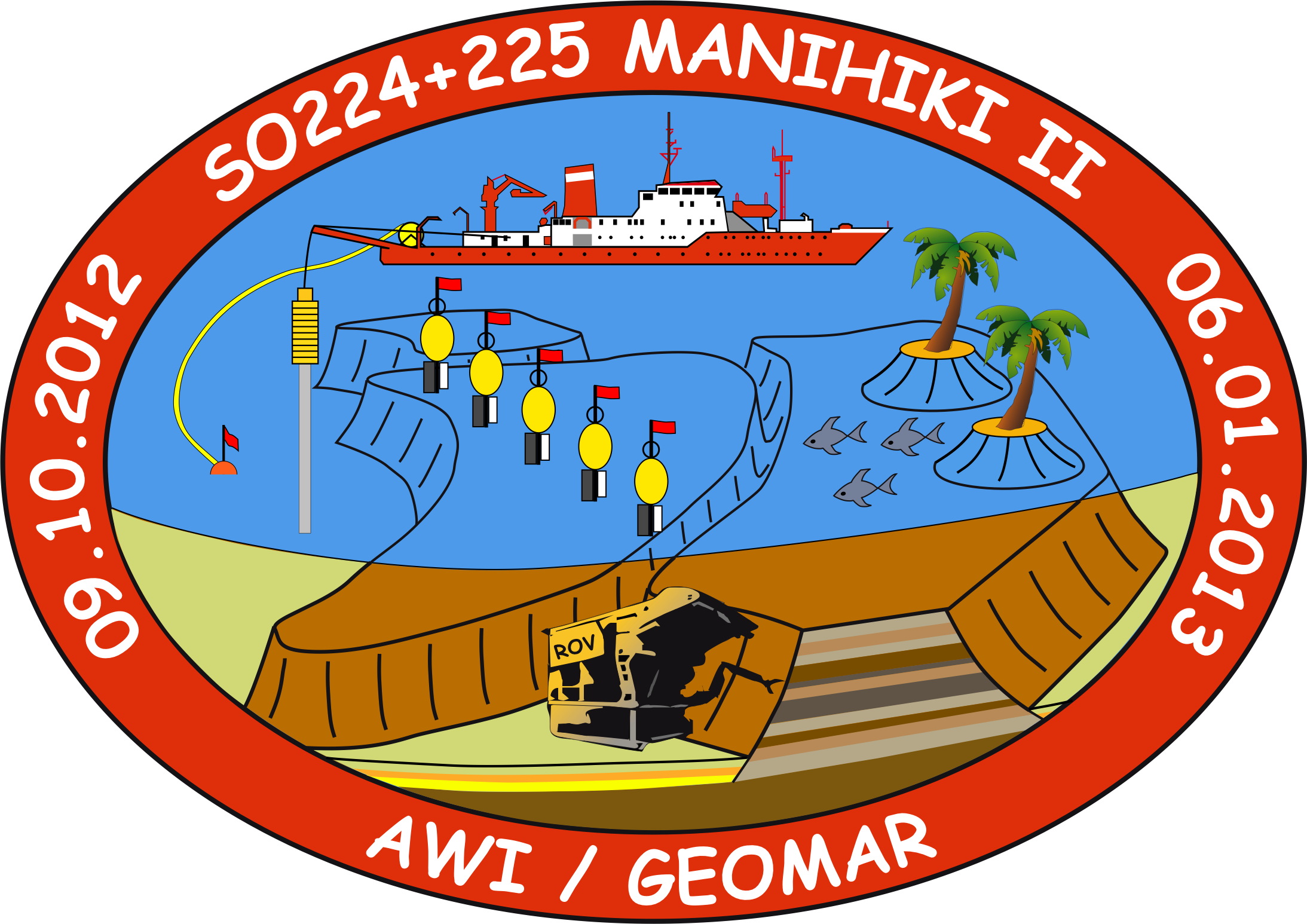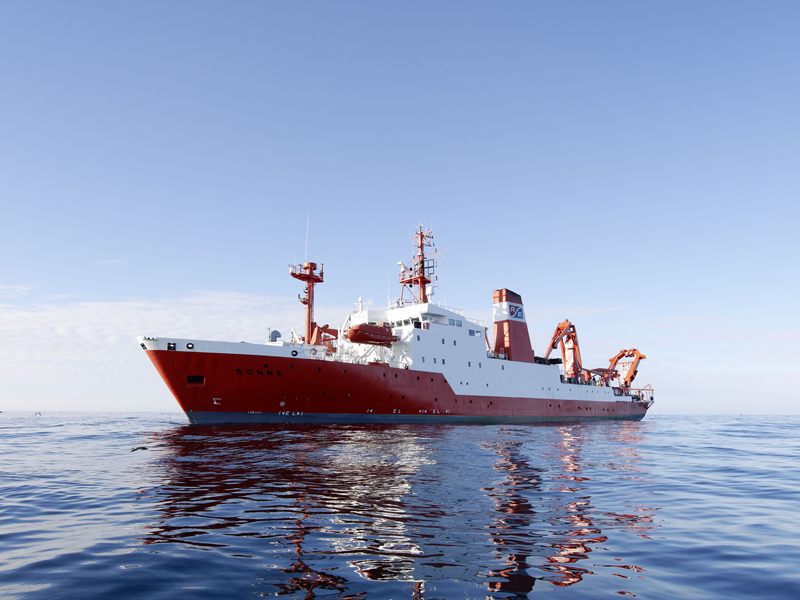SONNE (1977-2014) SO225
- Area:
- Equatorial West Pacific
- Time:
-
21.11.2012 - 05.01.2013
- Institution:
- GEOMAR
- Chief scientist:
- Reinhard Werner

RV Sonne cruises SO-224 and SO-225 into the equatorial West Pacific are part of the cooperative project MANIHIKI II between GEOMAR and the Alfred Wegener Institute for Polar and Marine Research (AWI), funded by the German Ministry of Education and Research (BMBF). Principal Investigators of the project are Professor Kaj Hoernle (GEOMAR), Professor Dirk Nürnberg (GEOMAR), Dr Gabriele Uenzelmann-Neben (AWI), Dr Karsten Gohl (AWI) und Professor Ralf Tiedemann (AWI). This multidisciplinary project continues previous research at the Manihiki Plateau conducted since 2007 (SO-193) into morphological, volcanological, geochemical, and geochronological studies and is now broadened by geophysical and paleoceanographic research foci.
The Manihiki Plateau is a massive submarine lava plateau, its area of ~550,000 km2 is approximately equal in size to France. It is considered a "Large Igneous Province" formed by huge volcanic eruptions. To date, however, it is still unclear, if the plateau is the result of a single or multiple magmatic events, how long the volcanic activity continued and what their causes and effects on the environment are. Its location at the southeastern margin of the West Pacific Warm Pool also defines the Manihiki Plateau as a key area for a better understanding of the Pacific Ocean paleoceanography and its effects on the global climate.
While the preceding RV SONNE SO-224 expedition by AWI conducts an extensive geophysical program (e.g. seismic stratigraphy) of which preliminary results are used in the follow up cruise, SO-225 focuses on the stratigraphically controlled sampling of the igneous successions of the Manihiki Plateau. This challenge will be accomplished by using the remotely operated vehicle ROV Kiel 6000 that can operate down to 6,000 m water depth. Coring of deep sea sediments and sampling of the overlying water column will add to the program. Subsequent shorebased research in the home institutes will be funded by the BMBF for another 2 years, addressing the following aspects:
(1) the temporal, spatial, and compositional evolution of the igneous basement of Manihiki Plateau;
(2) the environmental impact of the large volcanic eruptions, which formed the Manihiki Plateau;
(3) the dynamics and evolution of the West Pacific Warm Pool during the last ~3 million years, the potential oceanographic interaction between the equatorial Pacific and the Southern Ocean and its climatic responses.
The integration of scientific results from SO-224 and SO-225 with existing data from the West Pacific large igneous provinces Manihiki, Hikurangi, and Ontong Java will contribute towards a better understanding of the origin and effects of volcanic mega events, the formation of large igneous provinces, and the paleoceanography and paleoclimate of the equatorial West Pacific.



